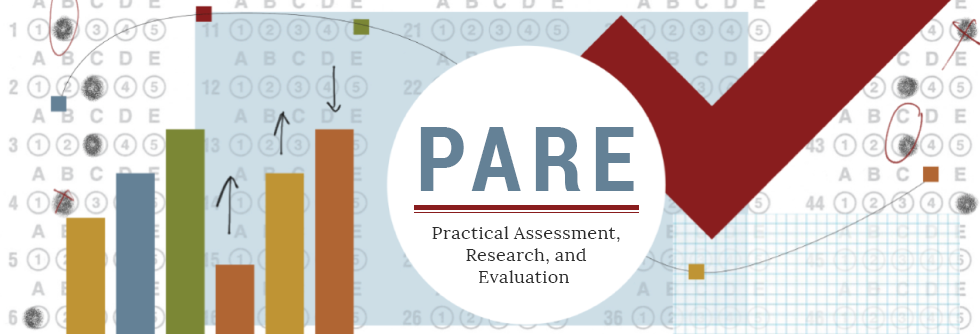Rounding in Angoff Ratings
DOI
https://doi.org/10.7275/mdva-pk78
Abstract
One common modification to the Angoff standard-setting method is to have panelists round their ratings to the nearest 0.05 or 0.10 instead of 0.01. Several reasons have been offered as to why it may make sense to have panelists round their ratings to the nearest 0.05 or 0.10. In this article, we examine one reason that has been suggested, which is that even if panelists are given the opportunity to provide ratings to the nearest 0.01 they often round their ratings to the nearest 0.05 or 0.10 anyway. Using data from four standard settings, we show that in many cases ratings ended in a 0 or 5 when panelists were given the option of using a scale from 0 to 100 in one-point increments and that only about 9% of all ratings ended in a digit other than a 0 or 5. We also examined the impact of different rounding rules and we found that results were quite similar when using different rounding rules. Additional analyses showed the common phenomenon of panelists giving too high of ratings for hard items and too low of ratings for easy items in comparison to conditional p-values. It is suggested that rounding ratings to the nearest 0.05 or 0.10 represent reasonable alternatives to rounding ratings to the nearest 0.01. Accessed 1,050 times on https://pareonline.net from May 02, 2018 to December 31, 2019. For downloads from January 1, 2020 forward, please click on the PlumX Metrics link to the right.
Creative Commons License

This work is licensed under a Creative Commons Attribution-NonCommercial-No Derivative Works 4.0 International License.
Recommended Citation
Wyse, Adam E.
(2019)
"Rounding in Angoff Ratings,"
Practical Assessment, Research, and Evaluation: Vol. 23, Article 6.
DOI: https://doi.org/10.7275/mdva-pk78
Available at:
https://scholarworks.umass.edu/pare/vol23/iss1/6
